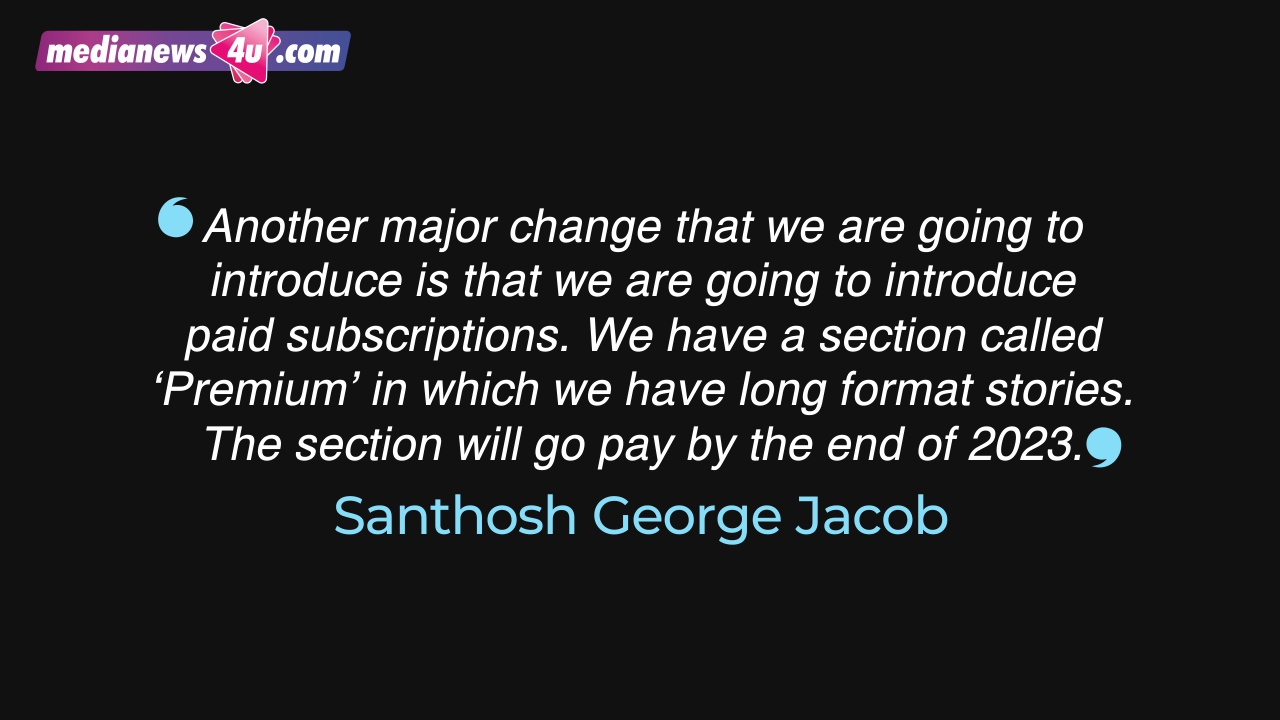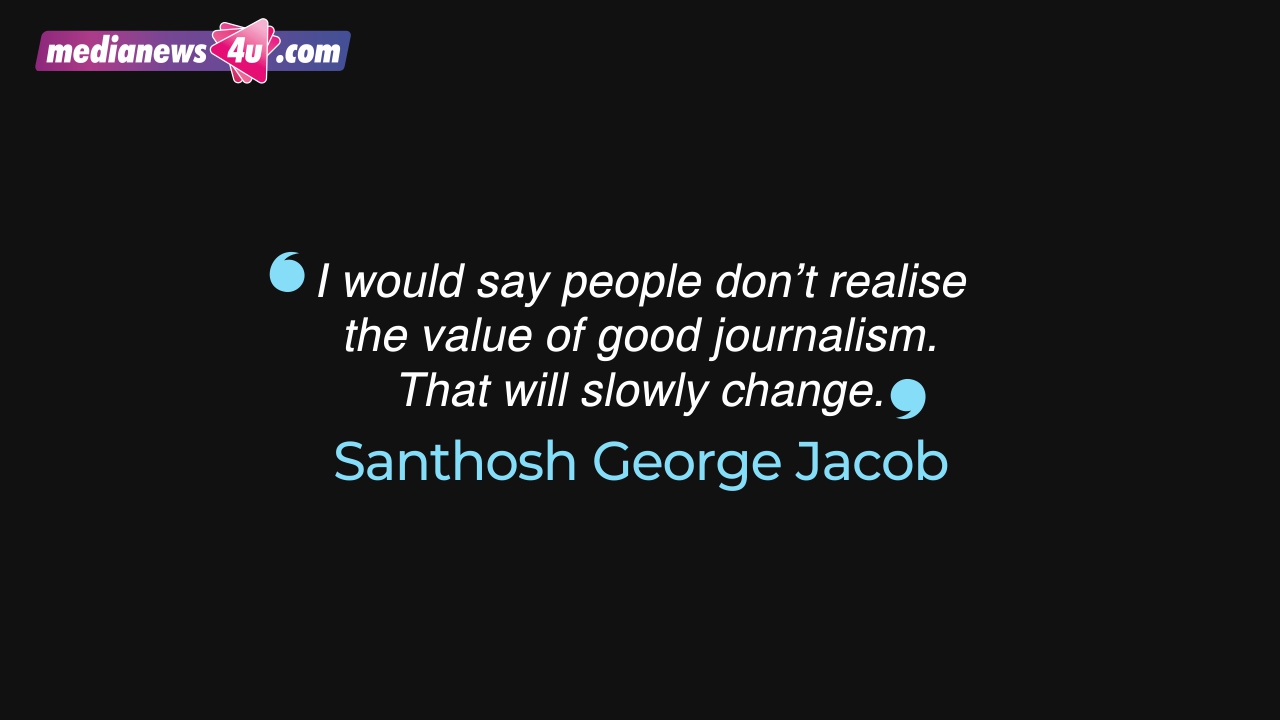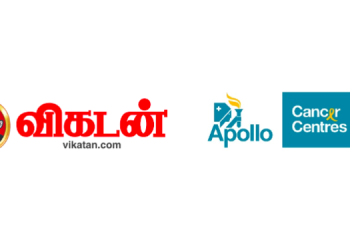Manorama Online has completed 25 years. Marking the occasion is a brand refresh with a website revamp. The changes aren’t just cosmetic. The brand is also planning to offer paid subscriptions in the near future.
In a freewheeling conversation with Medianews4u.com, Santhosh George Jacob, Co-ordinating Editor, Manorama Online, spoke about the genesis of the digital offering and its evolution, focus on quality over quantity over time, criticality of video and the thrust on hyperlocal content using the legacy brand Malayala Manorama’s vast network spread across the state.
25 years of Manorama Online: Tell us about the evolution of the content strategy since launch upto the current website revamp, and plans beyond.
Manorama Online was started in 1997 as a newspaper website – content from the Malayala Manorama newspaper was available on the digital format. By 2000, we launched Manorama Online as a bigger platform in which we had over 30 categories like movies, music, astrology etc. – where news was only 10 pc of the total content. Now, news occupies nearly 20 pc of the content but just 5 pc is content from the newspaper and the rest is original content.
When we launched, Manorama Online was the digital division for the entire group – for all the publications, TV and radio, digital content was managed by us. Later the digital properties of these publications evolved and it was handed over to the original owners.
Coming to the content strategy, Manorama Online portal is focused on Malayalis. We focus only on Kerala and if you want to know more about Kerala, this is the one stop hub for the same. When we started, as I mentioned above it was a newspaper website, and the content was updated once a day. Around the mid-2000s we started 24X7 operations mostly for other content; that was one of the major shifts. Also, over the years, we kept fine-tuning the content based on user feedback.
Our design revamp is also based on user feedback. In the earlier version, we had channels like movies, music, TV and so on. We have now consolidated these categories into entertainment, lifestyle etc. We now have 10 broad channels other than news.
The revamping has been done by the internal team and we have been using Adobe Experience Manager as our CMS since 2014 which is mobile-first. Ninety percent of users are consuming content on mobile devices. One of the major changes that is also going to happen along with the new design is use of personalisation and artificial intelligence. It is not completely implemented; it is just the beginning and certain modules are now personalised. In the next six months we will be introducing AI-driven features. We publish nearly 500 stories a day and have a team of close to 100 people. We are also heavily dependent on the newspaper team; the basic reporting happens from their end. We also have a huge pool of contributors writing for us.
For user feedback, we have an analytics tool Lens which has been developed by us. Previously we were using Chartbeat. Lens has got the features of Chartbeat plus Google analytics.
Before going for the website revamp using Lens, we assessed user behaviour and eliminated the channels or categories which were not visited frequently. We have also included new categories which were not available earlier. For example, segments like arts and culture were not available previously. These are segments in which readers are interested – not necessarily in terms of volume. Take the literary segment and book reviews; those don’t have the kind of traffic generated by a films-related section. But the audience who are visiting that particular segment are more serious readers. This was derived by observing the reader behaviour using Lens over six months.
We also restructured the entire back-end processes including the workflows. It is just not a design change; the entire team structure has also been changed. The team has been given training accordingly.
Earlier, it was a mix of quantity and quality, which was all based on the numbers. Now we are focusing more on quality than quantity. Right now, we don’t consider numbers alone to measure the impact of a story. We have various metrics to measure the story.
You have plans to go pay. What will the pricing be like?
Another major change that we are going to introduce is that we are going to introduce paid subscriptions. We have a section called ‘Premium’ in which we have long format stories. The section will go pay by the end of 2023.

The pricing part of the segment is yet to be finalised, but it will be very competitive. We have started the registration process. As of now we have received half a million registrations. Once the user starts the paid subscription, we will have other value-added services for them like ad-free experience or ad-lite experience across the site. We will be bundling paid services like magazine and e-paper subscriptions. We are trying to add more value with subscription to Manorama Max, the OTT platform from the Manorama Group. If the user is paying X amount, then we would give services worth 5X to them.
How was the traffic surge during Covid and has that proved sustainable?
During the Covid period, our monthly unique users peaked at around 40 million. Now, on an average, we are getting 36 million unique users a month. Hopefully we will be able to attain the Covid period numbers soon.
One trend we have noticed is that reader behaviour has changed drastically post the pandemic. People are spending more time on visual or video-related content. We call it visual stories and it is witnessing rapid growth compared to other stories. The short and long video format and podcasts are witnessing tremendous growth. In certain months, we are witnessing 200 to 300 pc growth in short form videos. Understanding the user requirements, we have had a video content production process since 2010. We have a clear video strategy formulated for the new group of users.
We keep existing users engaged by giving everything as a package – the textual story with videos embedded into it, creating a different kind of user experience. We are also focusing on video content to attract new audiences of age group 24 to 35 years who spend more time on video. We are giving more focus to short form video content. It is not that we are editing a portion from the long form content (production of long form content is also happening); we are producing original short form content like explainers. For example, automobile reviews are available only in short form. If you talk about the proportion between short and long format videos, it will be 60:40. Depending on the consumption habits the short content numbers will go up a bit more. Going forward, we cannot ignore video content.
Is the editorial policy any different for online?
We follow the basic editorial policies of the Malayala Manorama newspaper. At the same time, we carry light-hearted stories which typically the newspaper won’t carry.
We follow the newspaper’s policy like the political stand; when legal issues are involved, we won’t name the person’s or organisation’s name until and unless we have solid proof to make a claim. We have solid guidelines when it comes to reporting of issues pertaining to women and children.
What is Manorama Online’s approach to hyperlocal content?
A lot of international media organisations are getting into the hyperlocal landscape. We will be giving more importance to hyperlocal content with the new design. We have more than 5000 newspaper agents cum reporters in the small villages of Kerala. We will be making use of their services going forward.
Online portals are full of click bait headlines and customised for social media engagement. Do they factor in your editorial approach?
We are totally against click bait headlines. Headline writing is an art and what we are trying to do is make our headlines as good as possible. Social media engagement is very essential and a lot of traffic comes from social media platforms. But we are not entirely dependent on them. Probably around 30 pc of traffic comes from social media. We have a loyal audience base of 70 pc from search and direct channels.
What is the readership from geographies outside Kerala and which are the largest reader markets besides India and the Middle East?
We have traffic from all over the world. During the early period (1997), we had 95 pc traffic from outside India. It has changed, we get significant traffic from India now. More than 60 pc traffic is from Kerala and the rest of India.
The biggest traffic from outside India is from the Middle East especially UAE, Saudi Arabia and Qatar, which together account for around 20 pc. Around 10 pc is from the USA and the rest is from Europe like the UK, Germany. We also have reasonable traffic from Australia and New Zealand.
What is the audience profile? Is it getting any younger?
We have the highest percentage of traffic from the age group of 35 to 60 years. We have a reasonably good number of women readers, in the similar age bracket.
We are reaching the 18 to 24 age category readers through Instagram.
We are working on attracting readers in the age group of 18 to 35 years. The short video content format mentioned earlier is one of the strategies and it is working for us.
What is the view on news aggregation apps?
As a policy, we are not on any aggregator platform. In order to address the fast news consumption habits, we recently introduced a product called ‘Quick Reads’. In the category you can get a gist of the news with the headline. If you are interested in reading further, you can click the link and do so. The audience behaviour is changing rapidly over the years and success lies in how fast we are adapting to it.
What are the challenges you foresee in future growth?
One of the biggest challenges we see is to increase the paid subscription. As we produce more quality content, the subscription revenues should exceed the ad revenues. The challenge there is the price sensitivity of the Malayali audience. To tackle that we are planning to introduce more value-added services. We have to educate the users on the same. OTT subscriptions are on the rise, but that has not been able to extend to news sites. I believe this will also fall in place.

Another challenge we face is that the original and quality content is not given value in the current digital ecosystem. For example, the quality content like an automobile review given by a media organisation, versus that of a vlogger. This would be one of the biggest challenges faced by any media organisation – to establish the value of content before the audience.
Tell us about your stint with Manorama Group for over 30 years and the transition from print to digital…
I started my career as a trainee with Malayala Manorama newspaper in 1993. I joined directly after college and underwent an editorial training programme for two years. Those days we had written tests after the completion of first year and people used to be eliminated in between as well. By late 1996 we started working on digital projects and I became the first employee of Manorama Online, which was a one-man team. When I moved to digital, it wasn’t considered a premium place to be at. Now everyone realises that it is the future and people are keen on joining the digital team.
During the early days, I had been writing a column on automobiles, which was called FasTrack which I started in 1996. From that year to the mid-2000s, that was the only source to know about new vehicles.
Things have drastically changed. We don’t have any upper hand any more; a lot of people are doing independent videos and reviews. I would say people don’t realise the value of good journalism. That will slowly change. In countries like the USA, people are aware of the difference between quality content in prominent newspapers and others.

Feedback: [email protected]

















